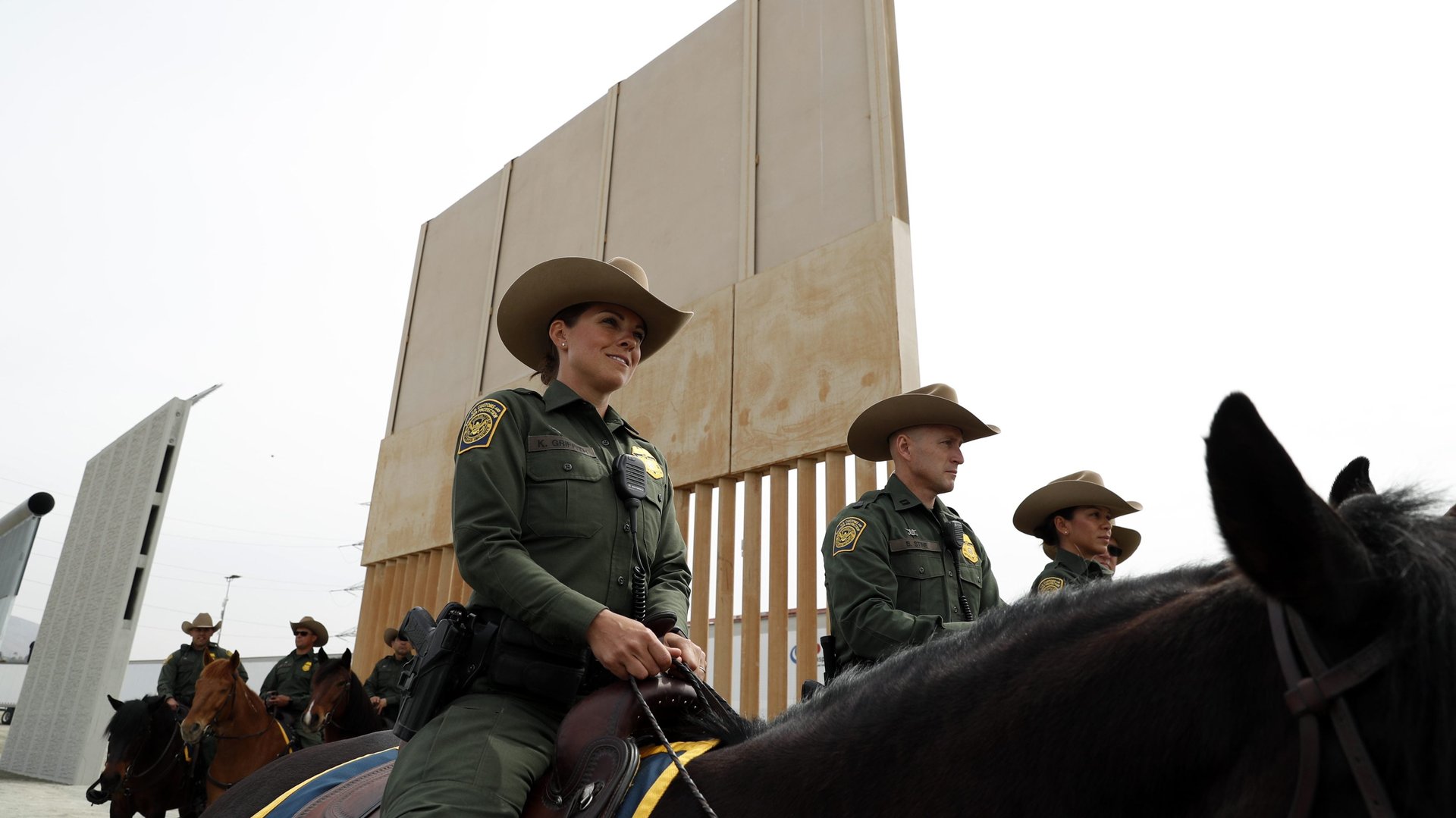The new US spending bill funds a tiny bit of border wall—but creates up to 60,000 new visas
Donald Trump would get $1.6 billion in funding for a border wall through the US spending bill that is currently awaiting a final vote in US Congress.


Donald Trump would get $1.6 billion in funding for a border wall through the US spending bill that is currently awaiting a final vote in US Congress.
The money would cover a tiny fraction—33 miles—of the new barrier he has promised to build to block illegal immigration. Another provision of the bill, however, could double the annual number of low-skilled immigrant workers the US admits into the country.
The proposal, which was passed by the House Thursday afternoon, has to be approved by the Senate before a deadline today (March 23) to avert a government shutdown. The White House said Trump would sign it if it reaches his desk.
The compromises in this omnibus spending bill, as it has been dubbed, underscore how difficult it’s been for the president to get Republicans to support his more unconventional stances on immigration. Though Trump got funding for the wall, most of it will go towards erecting new barriers in places where old ones already exist, while the rest of the money has to be spent on the kind of fencing that the Department of Homeland Security has used in the past, not the concrete prototypes Trump commissioned.
Another provision of the proposed bill would increase the number of H-2B visas issued every year. These are visas typically used by industries that rely heavily on manual labor such as landscaping and hospitality, and support for them is more in line with Republicans’ less hawkish stance on immigration in the past. Under the spending proposal, Congress authorizes the Trump administration to issue up to nearly 130,000 H-2B visas in in fiscal 2018, up from the current cap of 66,000, according analysis by the Economic Policy Institute, a Washington, DC-based think tank that focuses on low and middle-income workers.
Employers that use H-2Bs argue there are not enough visas to cover their needs. Some say the Trump administration’s crackdown on undocumented immigrants is worsening worker shortages.
Though the president has kept a hard line on most types of immigration, including highly-skilled workers and the family members of US citizens, he’s been more open to admitting low-skilled immigrants. (His own hotels have hired H-2B holders in the past.) Last year, his Department of Homeland Security upped the number of available H-2Bs by 15,000 under a similar authorization by Congress.
Expanding the use of H-2B is likely to earn Trump some points among business-focused Republicans, who say the US economy needs low-skilled immigrants. But it’s a big disappointment for anti-immigration advocates. The Federation for American Immigration Reform, a group that advocates for reduced immigration, for example, found little to like in the omnibus bill.